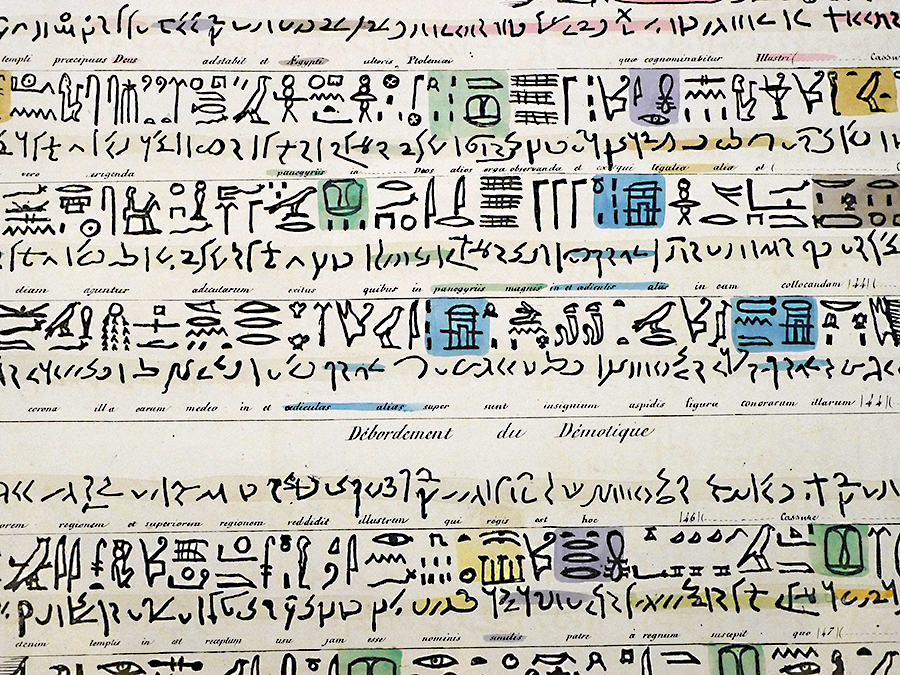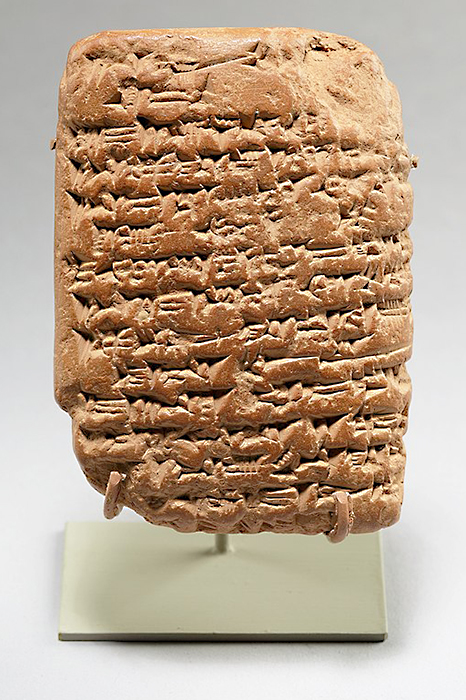
Bible, History, Archaeology
Bible,
History,
Archaeology
The trilingual inscription of Darius I
Introduction
The Bible and archaeology met through three important discoveries:
The second discovery was the deciphering of cuneiform script, the writing of Sumerian, Assyrian, Babylonian and Medo-Persian civilizations.
Image opposite: the three inscriptions, from top to bottom, Old Persian, Elamite and Akkadian. Public domain.
In 1802, he thought he had already identified «Persepolitan cuneiform inscriptions». But it was not until 1835 that the English military diplomat H. C. Rawlinson made a decisive breakthrough in deciphering Old Persian, climbing the rock of Behistoun in Iran's Zagros mountains to study a fresco commemorating the triumph of King Darius I the Great.
Image opposite: cuneiform writing takes its name from the wedge-shaped lines printed by a calamus on soft clay. From the Latin cuneus meaning «wedge». Public domain.
The texts of the bas-reliefs that covered the walls of Assyrian palaces, the remains of Persepolis, Susa, Babylon - all these countries that had a direct or indirect bearing on biblical history - were finally becoming comprehensible to us. Here, too, the Assyrian civilizations were known to us only through the Scriptures.
For example, historians of the time doubted the existence of King Sargon II, mentioned in Isaiah 20:1, until the discovery of Khorsabad, his capital and palace, whose walls were covered with bas-reliefs depicting his military campaigns in the Levant. These magnificent bas-reliefs can be admired at the British Museum in London and at the Musée du Louvre in Paris.
See the page on the article Darius I the Great King →
The Behistoun inscription celebrates the crushing of the revolts that marked the beginning of the reign of Darius I the Achaemenid (522-486 B.C.): 1,200 lines of engraved trilingual inscriptions. Public domain.
 Presentation of cuneiform writing by the Alphabets Association 13/03/2021
Presentation of cuneiform writing by the Alphabets Association 13/03/2021
Originating in what is now Iraq before 3200 BC, cuneiform writing is, as far as we know, the oldest form of writing in the world.
First developed by scribes as an accounting tool to keep track of bread and beer rations in ancient cities such as Uruk (in southeastern modern Iraq), the system quickly spread throughout the Middle East and was in continuous use for over 3,000 years, right up to the first century AD.
Image opposite: cuneiform writing chart. Irving Finkel and Jonathan Taylor.
Cuneiform is not a language but a correct way of writing distinct from the alphabet. It has no «letters» - instead, it uses between 600 and 1000 characters printed on clay to spell out words by dividing them into syllables, such as «ca-at» for cat or «mu-zi-um» for museum. Other signs represented whole words, like our «£» representing the pound sterling.
You can see how words can be written in syllables in the handy chart above, from cuneiform, by curators Irving Finkel and Jonathan Taylor.
One of the three registers of the north panel (the Apadana, east staircase). Parade of Mede and Persian notables. Pentocelo

The first discovery
The first discovery was the deciphering of hieroglyphics in 1822 by Jean-François Champollion (1790-1841).
This is the decree of Ptolemy V, 196 BC.
This decipherment was mainly based on a drawing taken from a stele known as the Rosetta Stone, discovered at Rosetta in Egypt's Nile Delta by a French army officer and handed over to the British as a surrender tribute during Bonaparte's military campaign in Egypt (1798-1801).

The third discovery
The third discovery was made by a farmer in 1887, more than 350 clay tablets in cuneiform script at the Tell El-Amarna site, in Egypt, the former capital of Pharaoh Amenophis IV, also known as Akhenaton.


 Presentation of cuneiform writing by the Alphabets Association 13/03/2021
Presentation of cuneiform writing by the Alphabets Association 13/03/2021